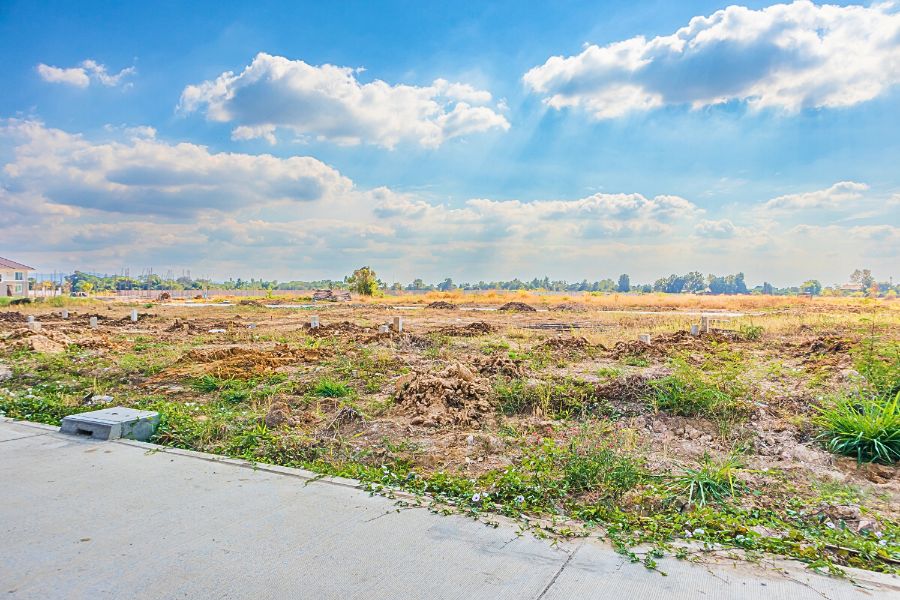Investing in real estate offers many possibilities, and there are different approaches to consider. One strategy that’s getting attention is the 1033 IRS exchange, which comes with unique benefits for investors interested in land deals. In this article, we’ll explore the details of this exchange and how it can be a game-changer for those looking for profitable opportunities in the land market.
The 1033 IRS exchange, often overlooked compared to its more well-known counterpart, the 1031 exchange, is a valuable tool for real estate investors, especially in the land sector. Understanding how this exchange works can provide you with tax advantages and smart moves that can significantly affect your investment portfolio.
Navigating the Basics of 1033 IRS Exchange
Before we explore the possible advantages, let’s first establish a basic understanding of what the 1033 IRS exchange involves. Section 1033 of the Internal Revenue Code allows for exchange of like-kind property and the deferral of capital gains tax. The 1033 exchange, similar to the 1031 exchange, allows an investor to defer capital gains taxes while relinquishing control of a property held for business or investment purposes.
- Definition: A 1033 exchange is a rule that lets investors delay paying taxes on the profit from selling property, but only under certain conditions.
- Eligibility Criteria: For this to apply, the property must be changed without the owner’s choice, often because of things like the government taking it or natural disasters.
- Time Constraints: Unlike the 1031 exchange, where you have a tight 45-day deadline to pick a new property, the 1033 exchange is more forgiving. Investors get a longer window of up to two years to find a replacement property.
Linking the pieces together, the 1033 exchange emerges as a valuable tactic for individuals involved in selling land, particularly in situations where changing the property isn’t optional. If you’re currently exploring acres for sale near you, understanding this exchange could significantly impact your investment strategy.
Land-Specific Examples for Exchange
- Eminent Domain Acquisition: Imagine you own a piece of land in a growing urban area, and the government decides to acquire it through eminent domain to build a new highway. In such a scenario, you could utilize a 1033 exchange to defer the capital gains taxes on the proceeds from the sale of your land by reinvesting in another property.
- Natural Disaster Relief: Let’s say you own a ranch in a region prone to wildfires. Unfortunately, a wildfire sweeps through and damages your property severely. If you decide to sell the damaged land and reinvest in a different property to continue your ranching activities, you could utilize a 1033 exchange to defer the taxes on the sale.
- Land Conservation Efforts: Suppose you own a large tract of land that has significant ecological value. Conservation organizations express interest in acquiring the land for preservation purposes. By using a 1033 exchange, you can sell the land to these organizations and reinvest the proceeds in another property that aligns with your investment goals, all while deferring capital gains taxes.
These examples illustrate how landowners can leverage the 1033 exchange to navigate various circumstances, whether it’s involuntary property changes due to government actions, natural disasters, or conservation efforts.
Strategic Approaches to Identify Replacement Property

Now that we understand the basics of the 1033 exchange, let’s look at effective ways to find the right replacement properties.
- Location Considerations:
- Investigate areas that show promise for future growth or have an increasing demand for land.
- Check out regions with favorable rules for the type of land use you’re planning.
- Market Analysis:
- Look at what’s happening in the land market right now to find places that might grow in the future.
- Consider things like how many people are moving in, upcoming construction projects, and economic signs.
- Diversification Opportunities:
- Take advantage of the 1033 exchange to mix up the types of land you own.
- Explore different kinds of land, like farms, businesses, or homes, depending on what you want from your investment.
By combining these approaches, investors can use the 1033 exchange not only to delay taxes but also to position themselves in upcoming land markets strategically.
Mitigating Risks and Maximizing Returns


Exploring the opportunities offered by a 1033 exchange is exciting, but it’s important to consider and manage potential risks to maximize returns.
- Due Diligence:
- Thoroughly investigate replacement properties to uncover any hidden issues.
- Check zoning regulations, environmental factors, and potential future developments in the area.
- Professional Guidance:
- Seek help from real estate experts experienced in land transactions.
- Consult legal advisors to navigate the complexities of the 1033 exchange and ensure compliance with IRS regulations.
By carefully researching and consulting experts to reduce risks, investors can turn the 1033 exchange into a dependable tool for lasting profits in the land market. If you’re actively looking for opportunities like available acres for sale nearby, adopting this thoughtful strategy can provide a comprehensive investment plan.
Conclusion
To sum up, the 1033 IRS exchange provides a smart way for investors interested in buying land. Successfully using this exchange involves carefully grasping its details, finding the right replacement properties, and minimizing risks. As you start your real estate investment journey, think of the 1033 exchange as a valuable resource in your toolkit.
For more information on land for sale and real estate investment opportunities, visit www.theamericandreamland.com or call/text +1-646-915-1234.
Note: This article is for informational purposes only. Green Tara Investments LLC and www.TheAmericanDreamLand.com do not provide legal or tax services, and it is best to consult your Legal and Tax advisors before making any investment decisions.







